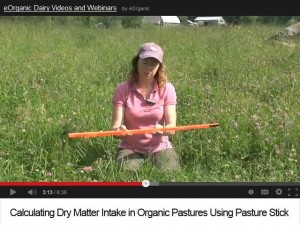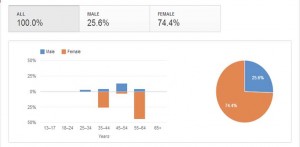 Since social media has quickly become a primary means of communication (i.e. 72% of all online adults now use social networking sites like Faceback, Twitter, LinkedIn, etc.) I’ve been conducting a professional development project for Extension educators in Vermont, Maine, and New Hampshire focused on using social media in our sustainable agriculture outreach and education work.
Since social media has quickly become a primary means of communication (i.e. 72% of all online adults now use social networking sites like Faceback, Twitter, LinkedIn, etc.) I’ve been conducting a professional development project for Extension educators in Vermont, Maine, and New Hampshire focused on using social media in our sustainable agriculture outreach and education work.
Along the way, I’ve picked up some social media “best practices.” I’m passing along my top 7 lessons learned that may be of help to you if you have or are considering social media for your farm business or your work with farmers.
1) Have a Social Media Plan. A good social media plan starts with determining what the desired outcomes might be. So start with the end in mind, even before you select your specific social media tool(s). How many people would you like to reach and what would you like them to do with the information you provide? How will you measure your success (i.e. increased sales, more farmers coming to your workshops, more YouTube views, etc.)? A social media plan can simply start by answering the 5 “W”s, i.e what, where, when, why, and who.
2) Focus on the Content. Early on, social media gurus were advising quotas like x posts or tweets per day or week but really to be effective (and avoid turning people off), posting interesting and/or timely information should be the goal. Think, “if you don’t have anything of interest to say, best not say anything at all.”
3) Keep it Concise. Twitter, with its 140 characters, is excellent editing practice to keep word counts in check. In the fast paced environment of social media, keeping your message concise is important. Fewer people click on the “see more” button. Concise video content is important too – YouTube metrics indicate that the first 15 seconds (yes, seconds) are critical to whether viewers will tune in or out of your video. I’ve heard from some of my friends and colleagues that they now look at how long a video is before they even choose to watch it—if it is longer than 8 minutes, they say they won’t bother!
4) Find Your Voice. Social media is by definition “social” so unlike “old” media, it is extremely helpful to show your personality to connect with your target audience. Disingenuous, fake, and dry posts are, frankly, a turn off.
5) Use Photos and Numbered Lists. Studies show that our brains retain twice as much if text or oral information is accompanied by a picture. Researchers suggest this is hardwired into our brains, likely stemming from survival techniques when most of the major threats to our lives in the savannah were apprehended visually. Our brains apparently love patterns as well and therefore numbered lists are really effective in social media. Some researchers say that our working memory is limited in capacity to about seven informational units, so keeping lists to 3 to 7 points is best.
6) Collaborate and Curate. We are all busy these days so as a time management strategy, think about ways to collaborate with others or curate your social media content. This blog, with its guest bloggers, is an excellent example! My fellow bloggers and I commit to a blog post about every 6 to 8 weeks, sharing the work load, and lending our unique voices.
7) Measure your Work. Coming full circle, to determine whether or not your social media is working, check in with your social media plan. Many social media platforms have built-in metrics that allow you to see number of views, shares, etc. If a certain social media tool is not meeting your planned expectations, there might be ways (like some of the above lessons learned) to improve it or it might make sense to drop that tool and adopt another. But if you don’t measure your efforts, it makes decision-making a bit challenging.
For more tips on using social media, consider taking a look at the recording of an eOrganic webinar my colleague, Debbie Roos from North Carolina State Extension, and I gave earlier this fall.









